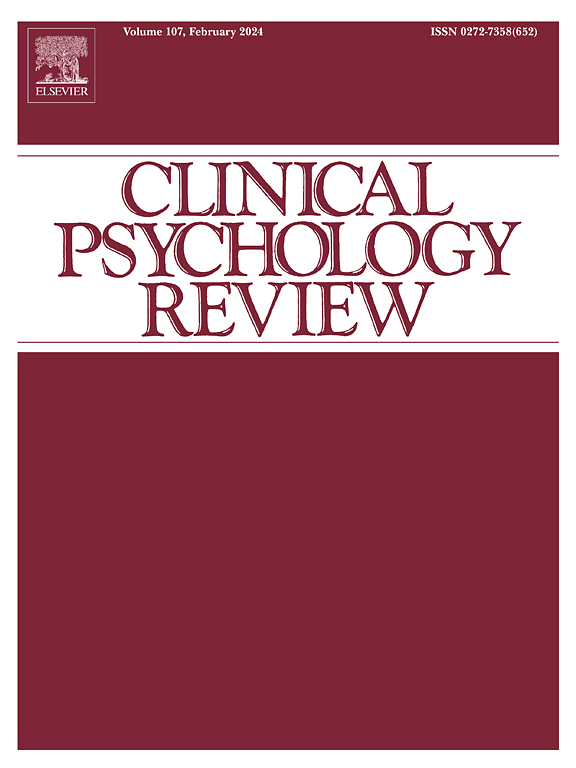精神病理学中的个人和人际空间表征改变
IF 12.2
1区 心理学
Q1 PSYCHOLOGY, CLINICAL
引用次数: 0
摘要
身体周围的空间以及对这一缓冲区的调节在适应行为中发挥着核心作用,并对精神病理学产生直接影响。为了社交舒适,我们选择在自己与他人之间保持的物理距离被称为人际距离(IPD),而标志着自我与外部世界之间感知边界的行动空间则被称为周身空间(PPS)。虽然 IPD 和 PPS 都代表个人空间,但它们是不同的概念,各自与不同的方法论相关联。在此,我们回顾了有关 IPD 和 PPS 的现有文献,以阐明它们对精神分裂症、自闭症、焦虑症等精神疾病的不同和共同作用。IPD和PPS的表征和调节的改变与多种精神疾病的临床症状和社交障碍有关,强调了自他边界和个人空间调节在适应性社交行为中的重要作用。未来的研究应阐明 IPD 和 PPS 之间的关系,并明确自我-他者边界失调和相关精神病理学的风险因素。本文章由计算机程序翻译,如有差异,请以英文原文为准。
Altered representation of peripersonal and interpersonal space in psychopathology
The space surrounding the body, and the regulation of this buffer zone play a central role in adaptive behavior, with direct implications for psychopathology. The physical distance that we choose to maintain between ourselves and others for social comfort is known as Interpersonal Distance (IPD), whereas the action space that marks the perceptual border between the self and the external world is known as Peripersonal Space (PPS
). While both IPD and PPS represent personal space, they are distinct constructs, each associated with different methodologies. Here we review the existing literature on IPD and PPS to elucidate their distinct and common contributions to psychiatric conditions including schizophrenia, autism, anxiety, and others. Altered representation and regulation of IPD and PPS were associated with clinical symptoms and social impairments across a wide range of psychiatric disorders, underscoring the important role of the self-other boundary and personal space regulation in adaptive social behavior. Future research should clarify the relationship between IPD and PPS and specify risk factors for self-other boundary dysregulation and associated psychopathologies.
求助全文
通过发布文献求助,成功后即可免费获取论文全文。
去求助
来源期刊

Clinical Psychology Review
PSYCHOLOGY, CLINICAL-
CiteScore
23.10
自引率
1.60%
发文量
65
期刊介绍:
Clinical Psychology Review serves as a platform for substantial reviews addressing pertinent topics in clinical psychology. Encompassing a spectrum of issues, from psychopathology to behavior therapy, cognition to cognitive therapies, behavioral medicine to community mental health, assessment, and child development, the journal seeks cutting-edge papers that significantly contribute to advancing the science and/or practice of clinical psychology.
While maintaining a primary focus on topics directly related to clinical psychology, the journal occasionally features reviews on psychophysiology, learning therapy, experimental psychopathology, and social psychology, provided they demonstrate a clear connection to research or practice in clinical psychology. Integrative literature reviews and summaries of innovative ongoing clinical research programs find a place within its pages. However, reports on individual research studies and theoretical treatises or clinical guides lacking an empirical base are deemed inappropriate for publication.
 求助内容:
求助内容: 应助结果提醒方式:
应助结果提醒方式:


